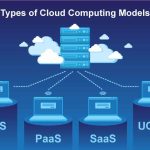Cloud computing exhibits the following key characteristics:
Agility improves with users’ ability to re-provision technological infrastructure resources.
Application programming interface (API) accessibility to software that enables machines to interact with cloud software in the same way that a traditional user interface (e.g., a computer desktop) facilitates interaction between humans and computers. Cloud computing systems typically use Representational State Transfer (REST)-based APIs.
Cost reductions claimed by cloud providers. A public-cloud delivery model converts capital expenditure to operational expenditure. This purportedly lowers barriers to entry, as infrastructure is typically provided by a third party and does not need to be purchased for one-time or infrequent intensive computing tasks. Pricing on a utility computing basis is fine-grained, with usage-based options and fewer IT skills are required for implementation (in-house).The e-FISCAL project’s state-of-the-art repository contains several articles looking into cost aspects in more detail, most of them concluding that costs savings depend on the type of activities supported and the type of infrastructure available in-house.
Device and location independence enable users to access systems using a web browser regardless of their location or what device they use (e.g., PC, mobile phone). As infrastructure is off-site (typically provided by a third-party) and accessed via the Internet, users can connect from anywhere.
Maintenance of cloud computing applications is easier, because they do not need to be installed on each user’s computer and can be accessed from different places.
Multitenancy enables sharing of resources and costs across a large pool of users thus allowing
for:
Centralization of infrastructure in locations with lower costs (such as real estate, electricity, etc.)
peak-load capacity increases (users need not engineer for highest possible load-levels)
Utilization and efficiency improvements for systems that are often only 10–20% utilized.
Performance is monitored and consistent and loosely coupled architectures are constructed using web services as the system interface.
Productivity may be increased when multiple users can work on the same data simultaneously, rather than waiting for it to be saved and emailed. Time may be saved as information does not need to be re-entered when fields are matched, nor do users need to install application software upgrades to their computer.
Reliability improves with the use of multiple redundant sites, which makes well-designed cloud computing suitable for business continuity and disaster recovery.
Scalability and elasticity via dynamic (“on-demand”) provisioning of resources on a fine-grained, self-service basis in near real-time (Note, the VM startup time varies by VM type, location, OS and cloud providers), without users having to engineer for peak loads.
Security can improve due to centralization of data, increased security-focused resources, etc., but concerns can persist about loss of control over certain sensitive data, and the lack of security for stored kernels. Security is often as good as or better than other traditional systems, in part because providers are able to devote resources to solving security issues that many customers cannot afford to tackle. However, the complexity of security is greatly increased when data is distributed over a wider area or over a greater number of devices, as well as in multi-tenant systems shared by unrelated users. In addition, user access to security audit logs may be difficult or impossible. Private cloud installations are in part motivated by users’ desire to retain control over the infrastructure and avoid losing control of information security.
The National Institute of Standards and Technology’s definition of cloud computing identifies “five essential characteristics”:
On-demand self-service. A consumer can unilaterally provision computing capabilities, such as server time and network storage, as needed automatically without requiring human interaction with each service provider.
Broad network access. Capabilities are available over the network and accessed through standard mechanisms that promote use by heterogeneous thin or thick client platforms (e.g., mobile phones, tablets, laptops, and workstations).
Resource pooling. The provider’s computing resources are pooled to serve multiple consumers using a multi-tenant model, with different physical and virtual resources dynamically assigned and reassigned according to consumer demand.
Rapid elasticity. Capabilities can be elastically provisioned and released, in some cases automatically, to scale rapidly outward and inward commensurate with demand. To the consumer, the capabilities available for provisioning often appear unlimited and can be appropriated in any quantity at any time.
Measured service. Cloud systems automatically control and optimize resource use by leveraging a metering capability at some level of abstraction appropriate to the type of service (e.g., storage, processing, bandwidth, and active user accounts). Resource usage can be monitored, controlled, and reported, providing transparency for both the provider and consumer of the utilized service.
Service models
Cloud computing providers offer their services according to several fundamental models:




Comments are closed